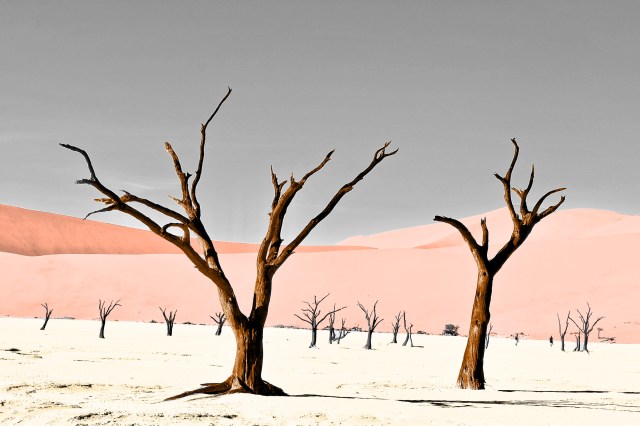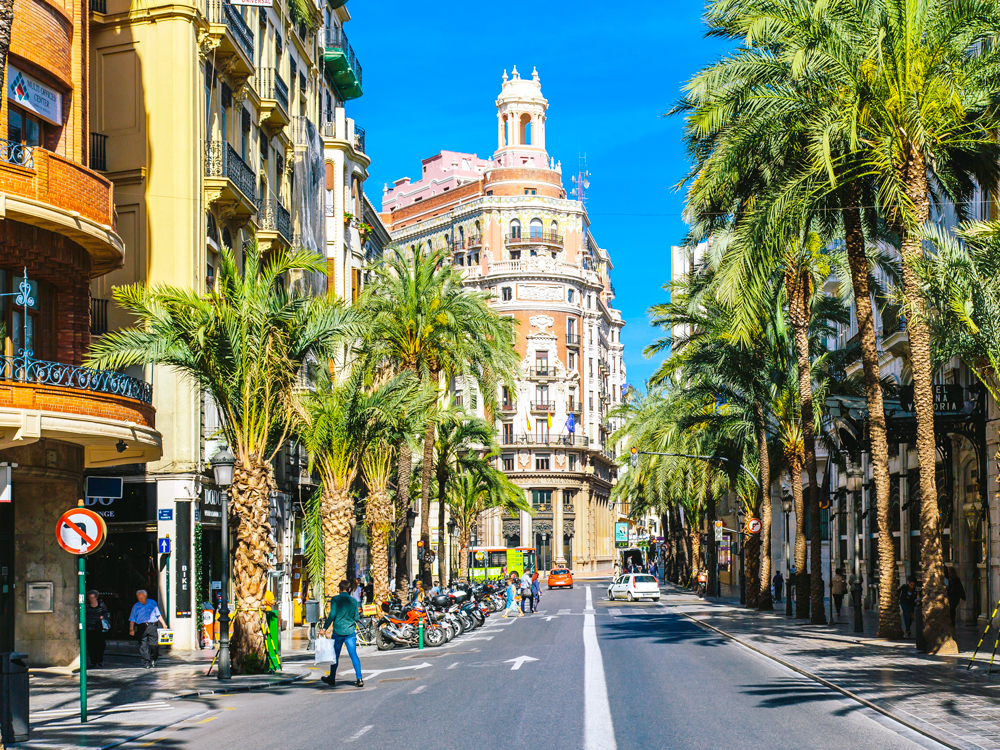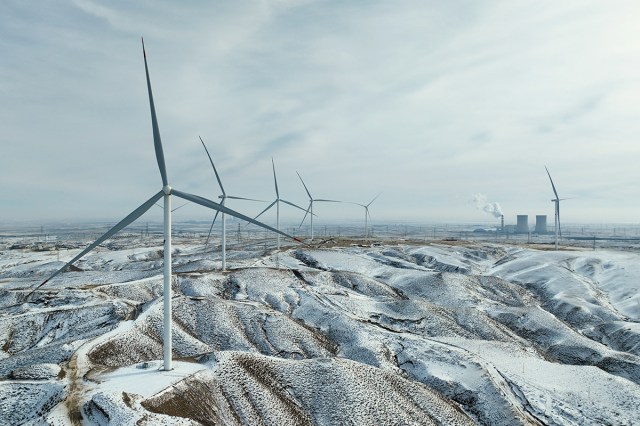
They Aren’t Defined by Heat
It’s easy to assume deserts are just scorching-hot stretches of sand that bake under the sun. But the real defining feature of a desert isn’t temperature — it’s precipitation. By scientific definition, a desert is any region that receives fewer than 10 inches of precipitation per year. And while that moisture usually falls as rain, snow can also occur in hot deserts when clear skies and exposed land surfaces allow temperatures to plummet.
Deserts can be hot — such as the Sonoran in the Southwestern United States or the Sahara, which spans much of North Africa — or cold, such as Antarctica and the Gobi in the wintertime in Northern China. What they all share is extreme dryness, leading to sparse vegetation and limited surface water.
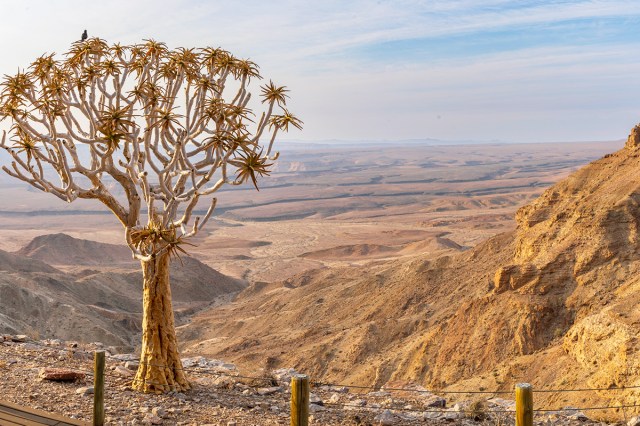
Cacti Aren’t Native To Most Deserts
Cacti have become synonymous with desert life, but these spiny mascots are native only to the Americas. These plants have unique areoles, aka small structures from which spines and flowers can grow. That means the towering saguaros of Arizona or the rounded golden barrels of Mexico won’t be found in other parts of the world.
Cacti have become synonymous with desert life, but these spiny mascots are native only to the Americas. Defined by their unique areoles, the small structures that sprout both spines and flowers, cacti didn’t evolve elsewhere, so familiar sights like the towering saguaros of Arizona or the rounded golden barrels of Mexico won’t be seen in other parts of the world.
Australia’s Outback or Africa’s Namib Desert, for example, are home to their own drought-adapted plants, but they aren’t true cacti. Australia’s bottle trees store water in specialized tissues, while the Namib’s rare Welwitschia plant can survive for thousands of years in some of the driest places on Earth.
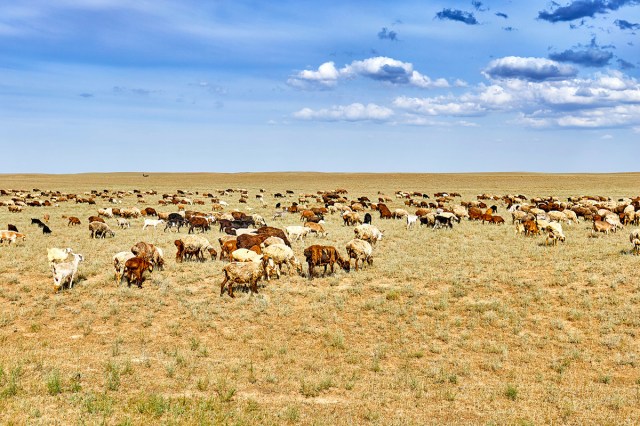
Deserts Make Up Roughly One-Fifth of the Earth’s Surface
Although deserts may seem like rare or remote environments, they’re actually a common land type. About 20% of Earth’s land surface is classified as a desert due to the low levels of precipitation. If you include all arid and semi-arid regions — areas that experience long dry seasons or persistent moisture deficits — that number rises to about 33% of Earth’s land surface, making drylands one of the planet’s most widespread biomes.
Those vast stretches don’t just sit empty, of course: More than 1 billion people live in or around desert regions, including communities across the Sahara, the Gobi, and the American Southwest. Many have adapted over generations, building livelihoods around nomadic herding and breeding as well as dryland farming.
More Interesting Reads
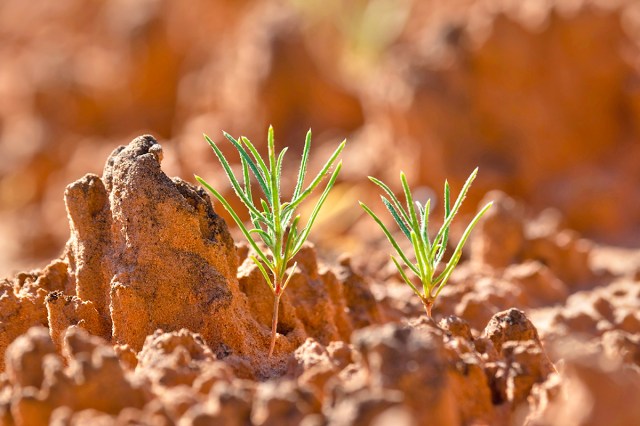
Life Thrives Below the Surface
At first glance, deserts may appear sunbleached and lifeless — but just below the surface, a surprising amount of life is hard at work. One of the most important players is biological soil crust. In the desert, this thin, living layer consists mostly of cyanobacteria, ancient photosynthetic bacteria that have been around for more than 2.5 billion years.
These microorganisms form dense, thread-like networks just below the ground’s surface; as they move through the soil, they secrete a sticky substance known as desert glue that helps resist erosion and holds moisture. These humble microbes are often the first life forms to settle and thrive in barren land, paving the way for mosses, lichens, and eventually, plants.
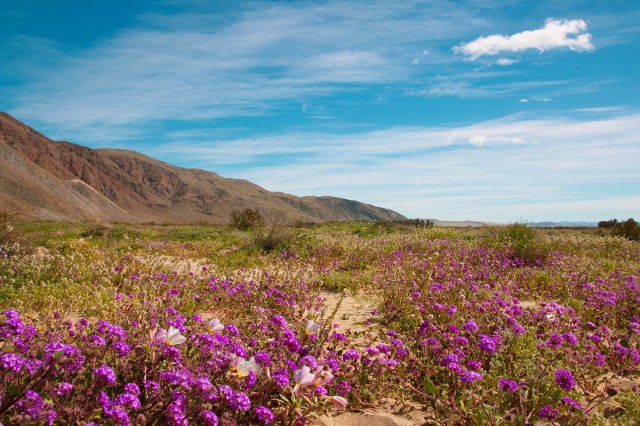
Deserts Can Bloom After Rain
Most of the time, deserts are dry and dusty, but when the conditions are right — usually after a rare rainfall — they can erupt into a short-lived explosion of color. This phenomenon is known as a “superbloom,” and it’s as stunning as it is unpredictable. Just one good rainfall can trigger a dramatic transformation almost overnight: Dormant seeds, some of which may have been lying in wait for years, suddenly burst into vibrant life.
Those hardy seeds can sprout wildflowers, grasses, and flowering cacti. When they receive that long-awaited rain, they germinate quickly, race to bloom, and set seed again before the water disappears. In places such as California’s Anza-Borrego Desert or Chile’s Atacama, these superblooms can blanket the landscape in vibrant purples, yellows, and oranges, making for a surreal sight in what’s typically a largely monochromatic sea of sand and stone.

There’s a Specific Term for Desert Animals
Animals that live in deserts are so uniquely adapted to their environment that they have their own name: xerocoles. Xerocoles have developed incredible strategies to beat the desert heat and survive on minimal moisture. For example, fennec foxes, which are native to Northern African deserts, have large ears to help dissipate heat, while kangaroo rats get all the water they need from seeds without having to drink a single drop.
Many of these (often adorable) critters are also nocturnal, coming out only at night to avoid the sun’s punishing rays. Others burrow underground or go into torpor — essentially a mini-hibernation that temporarily slows down body function — to conserve energy and ensure they don’t just survive, but continue to thrive in their rather harsh surroundings.

